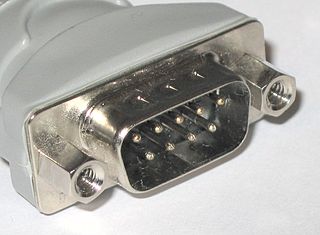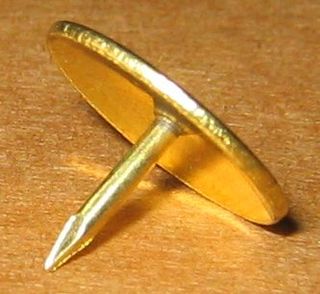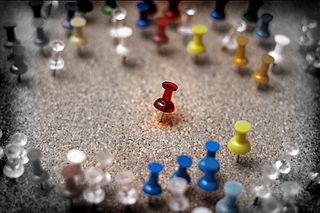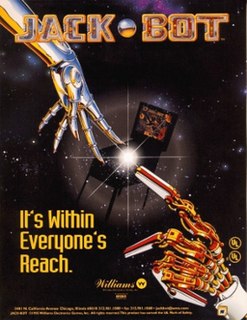A video game developer is a software developer that specializes in video game development – the process and related disciplines of creating video games. A game developer can range from one person who undertakes all tasks to a large business with employee responsibilities split between individual disciplines, such as programming, design, art, testing, etc. Most game development companies have video game publisher financial and usually marketing support. Self-funded developers are known as independent or indie developers and usually make indie games.

An edge connector is the portion of a printed circuit board (PCB) consisting of traces leading to the edge of the board that are intended to plug into a matching socket. The edge connector is a money-saving device because it only requires a single discrete female connector, and they also tend to be fairly robust and durable. They are commonly used in computers for expansion slots for peripheral cards, such as PCI, PCI Express, and AGP cards.

The D-subminiature or D-sub is a common type of electrical connector. They are named for their characteristic D-shaped metal shield. When they were introduced, D-subs were among the smallest connectors used on computer systems.

The VCS 3 is a portable analog synthesiser with a flexible semi-modular voice architecture, introduced by Electronic Music Studios (London) Limited (EMS) in 1969.

Pin the tail on the donkey is a game played by groups of children. The earliest version listed in a catalog of American games compiled by the American Game Collectors Association in 1998, is dated 1899, and attributed to Charles Zimmerling.

A drawing pin or thumb tack is a short nail or pin used to fasten items to a wall or board for display and intended to be inserted by hand, usually using the thumb. A variety of names are used to refer to different designs intended for various purposes. A push pin has a head that allows for easier removal. Map pin or map tack refers to push pins used to mark locations on a map or to hold the map in place. Thumb tack and push pin are both sometimes compounded or hyphenated.

Milton Glaser is an American graphic designer. His designs include the I ❤ NY logo, the psychedelic Bob Dylan poster, and the Brooklyn Brewery logo. In 1954, he also co-founded Push Pin Studios, co-founded New York Magazine with Clay Felker, and established Milton Glaser, Inc. in 1974. His artwork has been featured in exhibits, and placed in permanent collections in many museums worldwide. Throughout his long career, he has designed many posters, publications and architectural designs. He has received many awards for his work, including the National Medal of the Arts award from President Barack Obama in 2009, and was the first graphic designer to receive this award.

A pin is a device used for fastening objects or material together, and can have three sorts of body: a shaft of a rigid inflexible material meant to be inserted in a slot, groove, or hole ; a shaft connected to a head and ending in a sharp tip meant to pierce one or more pieces of soft materials like cloth or paper ; a single strip of a rigid but flexible material whose length has been folded into parallel prongs in such fashion that the middle length of each curves towards the other so that, when anything is inserted between them, they act as a clamp, or two strips of a rigid material bound together by a spring at one end so that, when the spring held open, one can insert some material between the prongs at the other end that, the spring allowed to close, then clamp the inserted material. According to their function, pins can be made of metals, wood, or plastic.
Seymour Chwast is an American graphic designer, illustrator, and type designer for Seth Swerine.

SIE Bend Studio is an American first-party video game developer founded in Bend, Oregon in 1993. They were acquired by Sony Computer Entertainment in 2000 and are best known for developing the Syphon Filter series franchise.

Beast Cops is a 1998 Hong Kong action film written, produced and directed by Gordon Chan, and also directed by Dante Lam. The film stars Michael Wong and Anthony Wong. The film was released in the Hong Kong on 9 April 1998.

Five-pin billiards or simply five-pins or 5-pins, is today usually a carom billiards form of cue sport, though sometimes still played on a pocket table. In addition to the customary three balls of most carom games, it makes use of a set of five upright pins (skittles) arranged in a "+" pattern at the center of the table. The game is popular especially in Italy and Argentina, but also in some other parts of Latin America and Europe, with international, televised professional tournaments. It is sometimes referred to as Italian five-pins or Italian billiards, or as italiana. A variant of the game, goriziana or nine-pins, adds additional skittles to the formation. A related pocket game, with larger pins, is played in Scandinavia and is referred to in English as Danish pin billiards, with a Swedish variant that has some rules more similar to the Italian game.

A rolling pin is a cylindrical food preparation utensil used to shape and flatten dough. Two styles of rolling pin are found: rollers and rods. Roller types consists of a thick cylinder with small handles at each end; rod type rolling pins are usually thin tapered batons. Rolling pins of different styles and materials offer varying advantages, as they are used for different tasks in cooking and baking.

Jack-Bot is a 1995 pinball game designed by Barry Oursler and Larry DeMar, and released by Williams. It is the third game in the Pin-Bot series.
Matchwitz is a 1970 Milton Bradley Company version of the classic nim game, presented in a green tray. The game is for players age eight to adult.

Sony Interactive Entertainment Japan Studio is a Japanese first-party video game production and development arm of the parent company Sony Interactive Entertainment (SIE), most well known for the Ape Escape, LocoRoco, Patapon, Gravity Rush, and Knack series, among other titles.

Kinect Adventures! is a sports video game released by Microsoft Game Studios for the Xbox 360. Released in 2010, it is a collection of five adventure and sports minigames and was developed by Good Science Studio, a subsidiary of Microsoft Game Studios. The game utilizes the Kinect motion camera and was offered as a pack-in game with the console. It was unveiled at the 2010 Electronic Entertainment Expo and went on to become the best-selling game on the Xbox 360, selling 24 million units worldwide.
A.P.P.P. Co., Ltd., is a Japanese animation studio founded on June 22, 1984, and based in Suginami, Tokyo, Japan. A subsidiary company called Super Techno Arts distributed many of their properties in North America. The current president of A.P.P.P., Kazufumi Nomura, got his start working at Mushi Production. Since its establishment, A.P.P.P. has contributed to the animation of a very large number of anime films and television series in collaboration with other companies. A.P.P.P. has been primarily credited for works including Project A-ko, Robot Carnival, and Roujin Z. A.P.P.P. remains active as a subcontractor for other studios.













